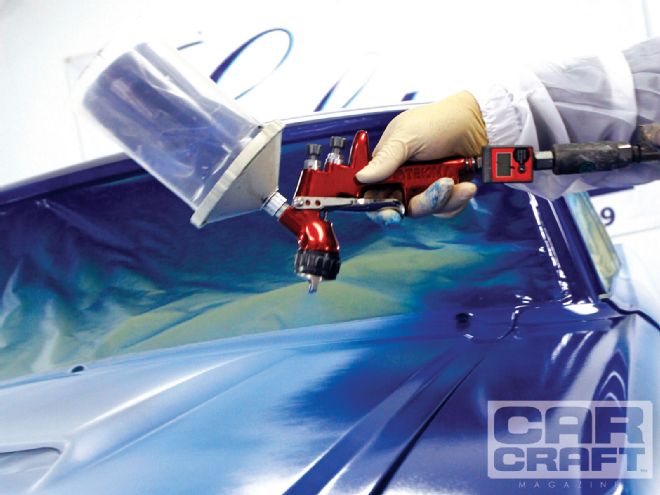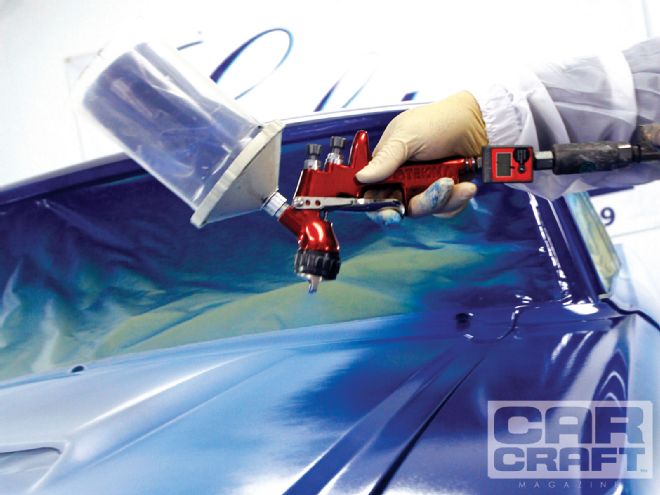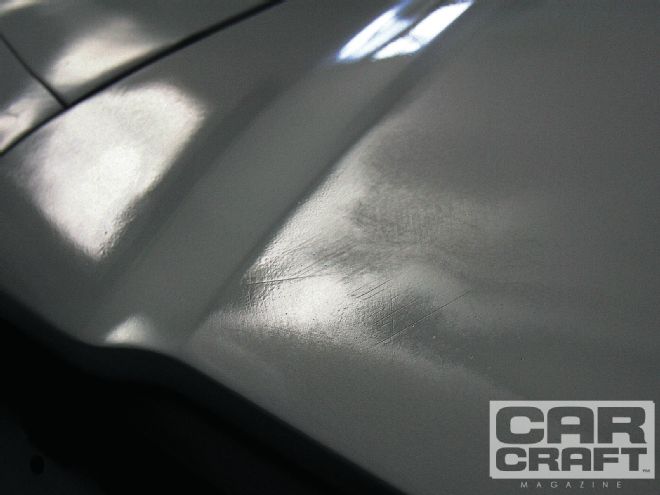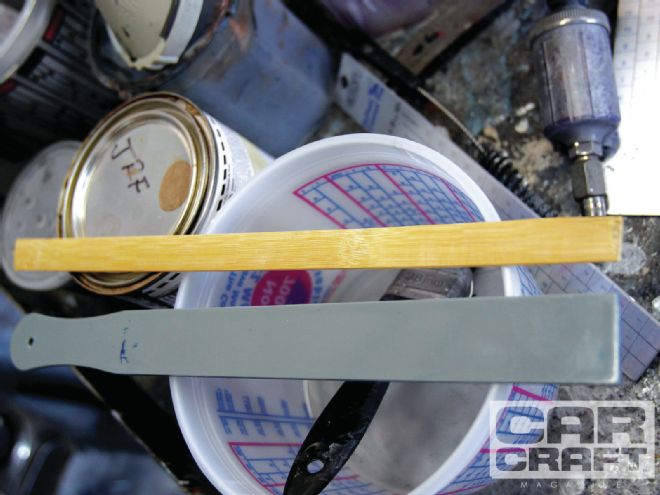
Another April issue, another paintjob. This one will differ slightly from the last few we've done. This year, we sought help from the professionals to refurbish this 1968 Ford Mustang fastback owned by Jon Schultz, local Mustang enthusiast and car-show organizer. Elite Restoration of Paramount, California, offered to help by doing the bodywork and paintjob on the car, using the latest formula of DuPont's Cromax Pro waterborne basecoat.
Why waterborne paint? It's here to stay, that's why. California requires its use (at least in repair shops), and the rest of the country is falling in line. Waterborne paint differs from solvent-based paints in that the chemicals used to suspend the pigments (the color that sticks to your car) are friendlier to the environment. Though not exactly mixed with the same kind of water that comes out of your tap, the formula uses water as a base, and that's what evaporates as the paint dries, emitting water vapor instead of volatile organic compounds (VOCs) into the atmosphere like solvent-based paints do.
People fear change, and switching to a waterborne basecoat does require a few changes to a painter's routine, and we will address those later in the article. First, let's meet our 1968 Ford Mustang Fastback and fix a few of her issues.

 We purposely bumped up the contrast in this picture to reveal all the scratches in the primer after it dried. This is good thing—you want to see this stuff here rather in your basecoat. Again, filler primer is meant to be sanded off. It fills in low spots, such as these sand scratches, and leaves a smooth, flat surface for the basecoat.
We purposely bumped up the contrast in this picture to reveal all the scratches in the primer after it dried. This is good thing—you want to see this stuff here rather in your basecoat. Again, filler primer is meant to be sanded off. It fills in low spots, such as these sand scratches, and leaves a smooth, flat surface for the basecoat.
Parts Description PN Source Price Cowl panel/grille assembly 3648HWT Dynacorn $408.99 Fender LH 3633 Dynacorn 212.99 Fender apron, rear LH 3634M Dynacorn 36.00 Hood hinge M3545 Dynacorn 26.00 SMC hood w/steel frame 3641U Dynacorn 470.00 Taillight panel 3643E Dynacorn 99.95 Transition pan w/shock mount 3649NWT Dynacorn 336.99 Trunk upper corner RH 3649DAWT Dynacorn 37.99 Valance, front SMC 3642G Dynacorn 61.99
How Much?
We didn't include a complete price list, because this was a job intended to be a high-end restoration from the start, and Elite was cool enough to let us follow along. Shop wisely, and you'd probably be able to gather all your materials from suppliers like Auto Body Toolmart for less than $2,000. That is, of course, assuming you have a water-compliant spray gun (with stainless steel internals), a large-capacity air compressor, welders, and the time to devote to such an undertaking. Painting a show car costs more than the bargain-basement paintjobs we normally do ourselves for the magazine. Look at our April and December issues from the last few years if that is the information you seek. We do, however, like to keep up with emerging technology, and waterborne paint is here to stay. When asked about the possibility of waterborne primers and clearcoats becoming available as well, DuPont's Steven Chaparro wouldn't say much more than if the EPA makes them mandatory, DuPont will be able to deliver. If or when that happens, you can count on Car Craft to bring it to you in a practical and straightforward presentation.
 One interesting tip Praveen shared with us was his recommendation to use plastic, rather than wood, stir sticks with waterborne paint. He described a few instances where the tints had separated out of the waterborne base and wicked up into the wooden stir stick. It wasn’t much but apparently enough to affect the final color of the car. He says he now only uses plastic stir sticks to mix waterborne paint.
One interesting tip Praveen shared with us was his recommendation to use plastic, rather than wood, stir sticks with waterborne paint. He described a few instances where the tints had separated out of the waterborne base and wicked up into the wooden stir stick. It wasn’t much but apparently enough to affect the final color of the car. He says he now only uses plastic stir sticks to mix waterborne paint.